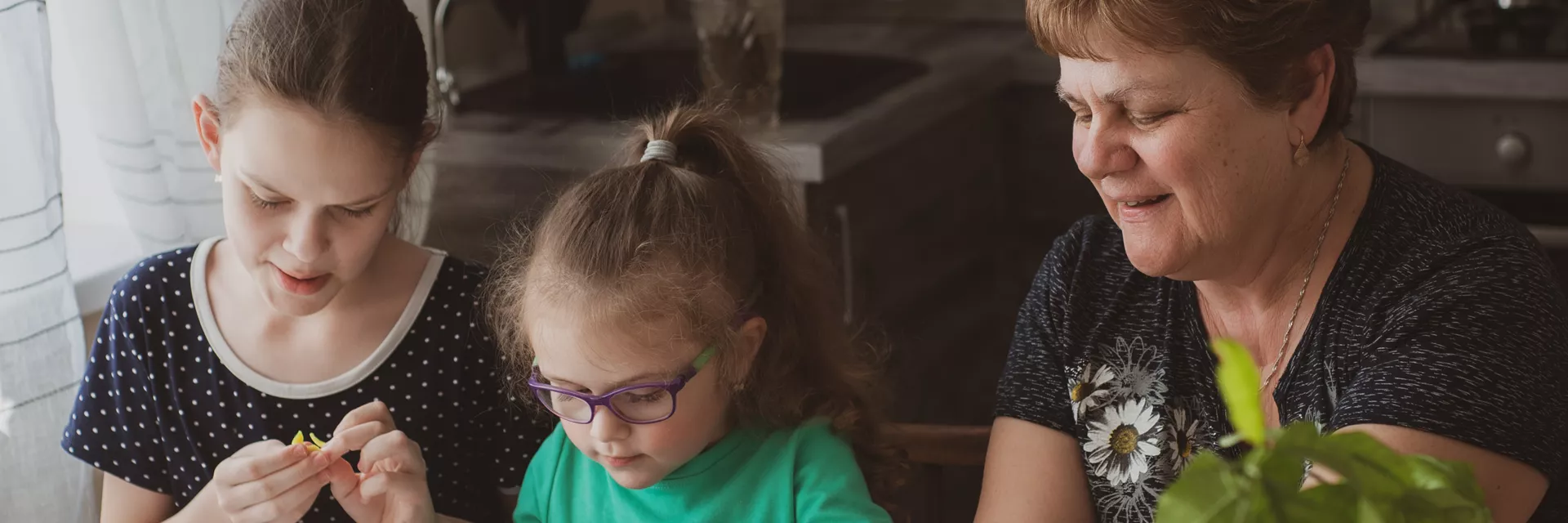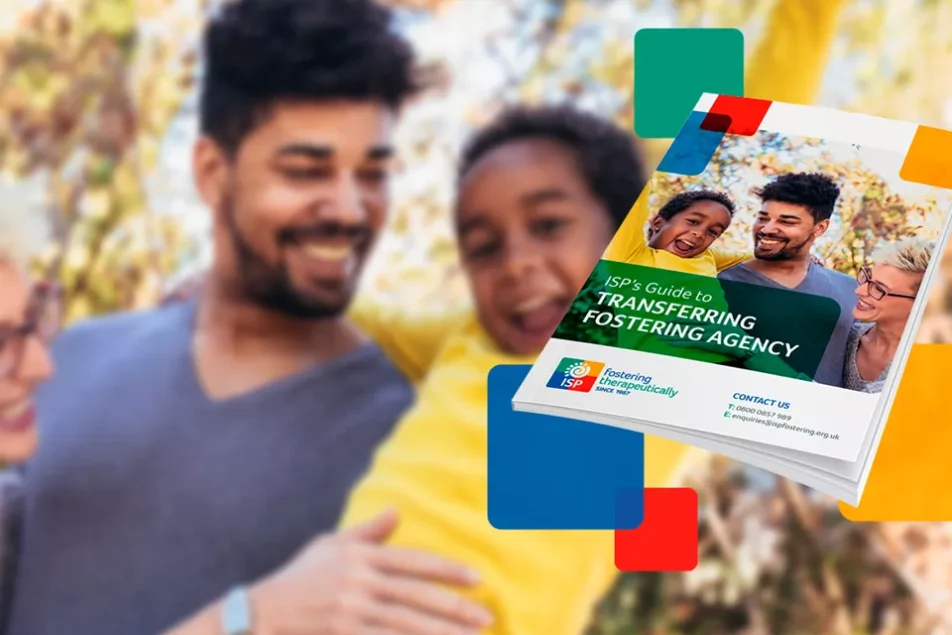
PACE Parenting in Foster Care
Discover the benefits of using the PACE therapeutic parenting approach in foster care, and how to use it in daily interactions with your child.
PACE parenting is a therapeutic approach that foster parents can use to build safe, trusting and meaningful relationships with the young people in their care.
It encourages foster parents to see the young person in their care as an infant – regardless of their age – and to think, feel, communicate and behave in a way that aims to make them feel safe.
In this article, you’ll learn:
What is PACE parenting?
The PACE parenting approach comprises the following four principles:
- Playfulness
- Acceptance
- Curiosity
- Empathy
When a difficult situation arises, foster parents can use these principles to get inside the child’s world and understand what’s really going on for them.
By doing so, not only are they helping the child navigate their big feelings, but also showing them what it’s like to have an adult who’s interested in their internal world, and that their thoughts and feelings are valid and important.
This is particularly important for young people in care who may have missed crucial developmental stages of having an adult there to help regulate their emotions, or those who learned through early experiences that expressing their needs would lead to punishment or rejection.

Principles of PACE parenting
Discover the four different principles below, including examples of how to use them in everyday interactions with your child.
Playfulness
Playfulness is all about being light-hearted and even a little silly at times. Being playful and using humour in daily life is a great way to share meaningful interactions with your child. This is especially useful when trying to connect with a child who doesn’t like hugs and affection.
There are many different ways to be playful, for example:
- Sing a song together on the way to school
- Make up a funny story together while cooking dinner
Moments of silliness and joy in everyday interactions can help to bring you and your child closer.
There’s a time and place for playfulness
If you’re being silly when your child is expressing big feelings about losing their favourite toy, your child may feel quite hurt, and that their feelings are not important.
Elements of playfulness – such as a light tone of voice that’s used in storytelling, a soft facial expression, and coming down to their level – may help to diffuse these situations when used alongside the other principles of PACE.
Playfulness may sound like…
- “It looks like all your toys are having a party on the floor. Can you help them go back to their toy box?”
- “You seem a little stressed right now. Would a dance party help make you feel better?”
- “It’s time for you to explore the back of your mouth too” – whilst your child brushes their teeth, and you make spaceship noises.
Acceptance
Acceptance is all about suspending your judgment and criticism. It’s about showing your child that their internal world is safe with you, and that you accept whatever is going on for them. This helps to create a real sense of safety for your child.
As a foster parent, you do not have to show acceptance for your child’s behaviour, but you must show acceptance of the intention behind it.
Let’s say your child has taken some money from you without your permission. Many of us would feel upset or even angry in this scenario. PACE parenting teaches us to look at the child’s underlying intentions first, which makes it so much easier for us to accept.
Before coming into care, your child may not have had an adult around to provide them with everything they needed, or it was too dangerous to ask for things. They had to take what they needed in order to survive.
In this scenario, acceptance could sound like:
“I’m disappointed that you took money from me without asking, but I know that you had to take the things you needed at home because your mum wasn’t able to. You can always ask me for the things you want.”
By understanding your child’s underlying intention, you’re able to reconnect with what they were trying to tell you. Then you can offer empathy.
Curiosity
Curiosity is about showing your child that you are interested in their internal world and want to understand what is behind a certain behaviour.
Children may not always know why they acted the way they did, or may not want to – or know how to – tell you the reason. However, behaviour is often our window into a child’s internal world. It’s the thing we can see on the surface, but it’s often powered by their deepest thoughts, feelings, wishes, motivations, and needs.
By being curious, you show your child that you are not here to judge. You just want to understand why they may have acted the way they did, and help them work through whatever feelings they may have.
Being curious may sound like:
- “I’m wondering if you broke that toy because you were feeling angry”
- “There’s been a lot going on for you the last couple of days and I’m wondering if that’s why you got into that fight at school. Am I right?”
- “I know that you were meant to be seeing your mum today and she had to change plans. I’m wondering if you thought that meant that she doesn’t care about you. Can you help me understand?”
Empathy
Empathy is about putting yourself in your child’s shoes, and feeling what they are feeling. This helps you to truly imagine what it must be like to be them in that moment.
If you know enough about their past experiences and the strategies they have used to survive, you can start to piece together why they may have acted the way they did. This can make it easier for you to form a response that is full of empathy, and is going to help your child heal from their trauma.
Plus, you’re going to be showing your child that they are not alone in their feelings. Together, you will get through it.
Empathic responses may sound like:
- “You really wanted to play for longer. I know you were having so much fun and it’s so annoying that we had to leave.”
- “Me saying that we can’t go to McDonald’s for dinner tonight has made you angry with me. I get why you don’t want to talk to me right now.”
- “I think you might be letting me know that you’re finding school really difficult at the moment. I can see why you don’t want to be there.”
Benefits of PACE Parenting
One of the greatest benefits of using PACE parenting in therapeutic fostering is that it helps to delay your response to situations you find difficult.
When your child is experiencing big feelings, the approach helps you stay calm and tune into what your child is experiencing in the moment.
You connect with your child first and then respond to their needs, rather than react to how they make you feel and your own triggers. This also helps to slow down your child’s responses too.
PACE also helps your child learn how to self-regulate through a secure and trusting relationship. They learn that there are ways to make themselves feel better when difficult situations or feelings arise.
When to use PACE
PACE can be used in all different types of interactions but is especially useful in scenarios where your child is experiencing big feelings, or if they’ve been triggered.
Big feelings are often expressed in a child’s behaviour. This may include:
- Screaming, crying, kicking, or throwing objects
- Yelling, shouting, or using harsh words
- Hitting, biting, or pushing others
- Withdrawing from social interactions, avoiding eye contact, or seeking solitude
- Avoiding certain situations or things they find triggering, such as refusing to do a certain activity
- Needing to be around you all the time
- Appearing to be excessively compliant and avoiding any form of conflict
- Thumb sucking, bedwetting, or baby talk
They may also experience physical symptoms like headaches and stomachaches.
These behaviours may be a sign that something really big is going on for your child. They just may not have the language to tell you what it is or may be frightened because of past experiences.
PACE can be a really effective tool in these moments to help you explore what’s really going on for your child.

Key Takeaways: Top tips for PACE in fostering
PACE can be an incredibly useful tool to use in your daily interactions with the children in your care. Here are our five top tips to put PACE parenting into practice:
- Remember that behaviour is a window into your child’s internal world – thoughts, feelings, wishes, motivations and needs are often what drive behaviour.
- Use PACE to slow down your response – when difficult situations arise, use PACE to delay your response, remain calm and avoid being triggered.
- Playfulness can be a great way to connect – this is especially useful for children who are not comfortable with physical touch and affection.
- It’s best to think of it as ‘pACE’ rather than ‘PACE’ – every interaction should be Accepting, Curious and Empathetic. However, think carefully about when it’s appropriate to use Playfulness.
- Practice, practice, practice – you won’t always get it right; connecting with a child living with trauma can take time, persistence and patience.
Learn about therapeutic parenting…

Secure Base Model Explained
Explore the benefits of the Secure Base model and how it helps children in care feel safe and secure.

Therapeutic parenting: Rethinking Parenting Styles for Children in Care
Discover why certain parenting strategies aren’t suitable for foster children, and how to adopt a therapeutic approach.

Trauma and attachment
Discover the impact of early childhood trauma, and what it means for young people in foster care.
